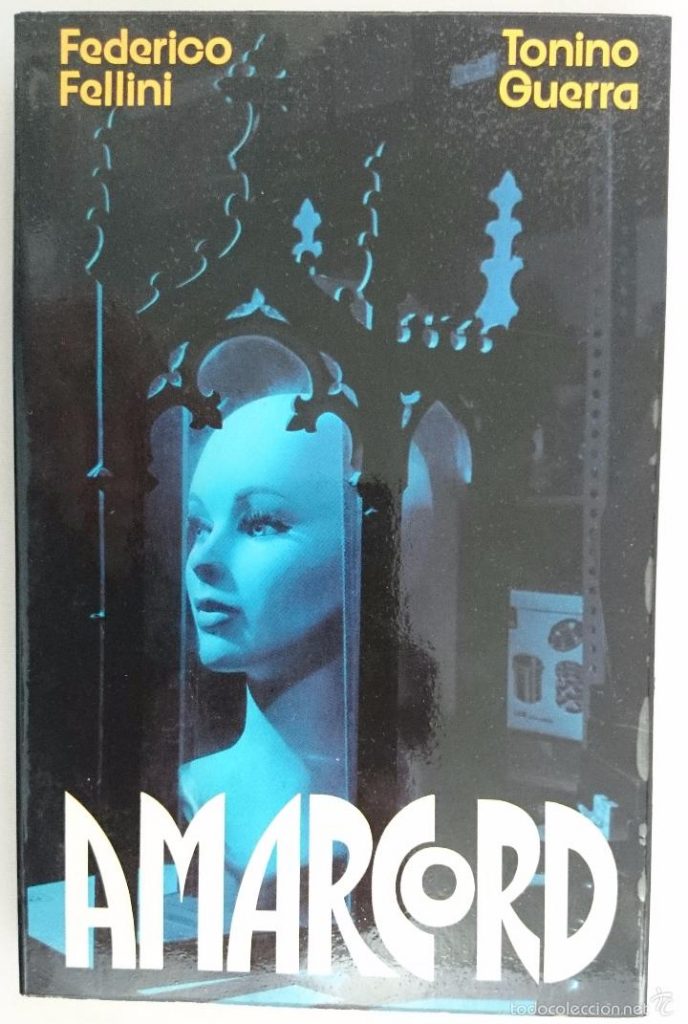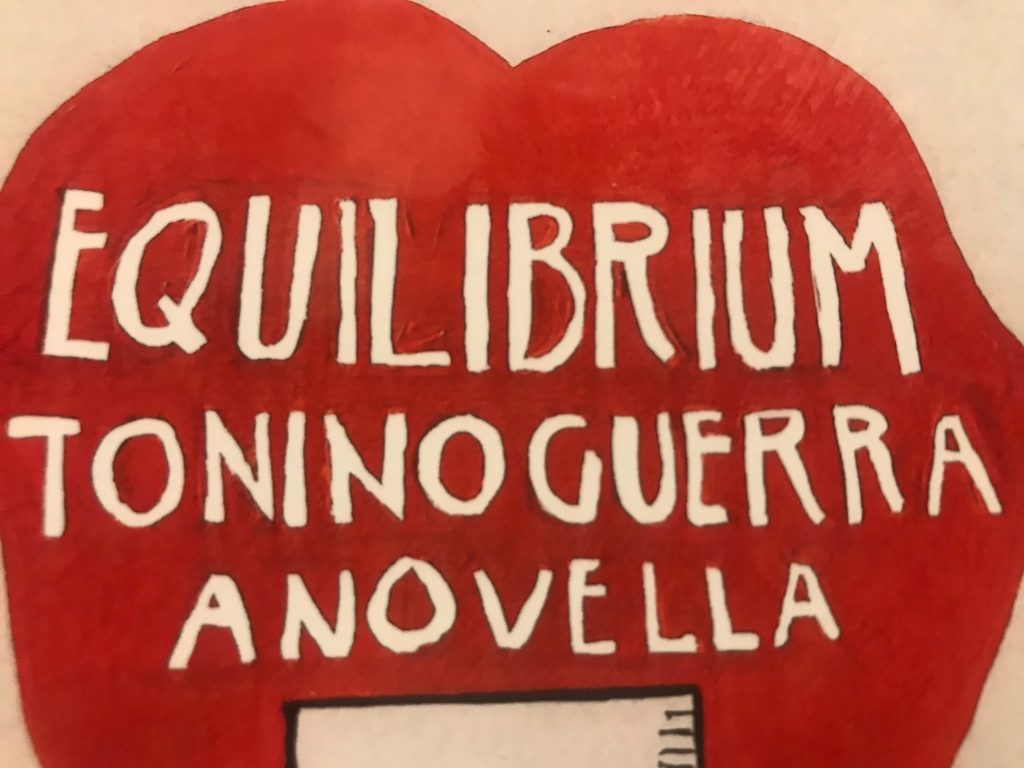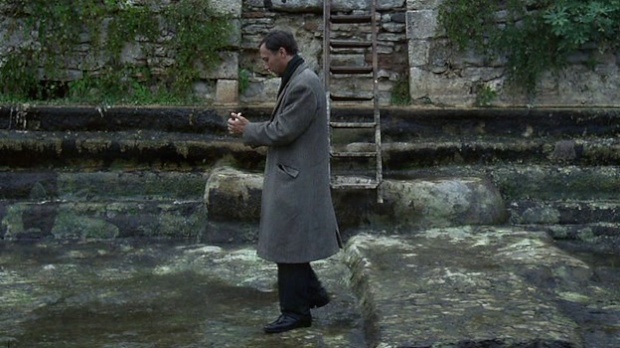Commissioned by MUBI in July 2020. — J.R.
Postwar Consequences: Tonino Guerra’s Equilibrium
Jonathan Rosenbaum
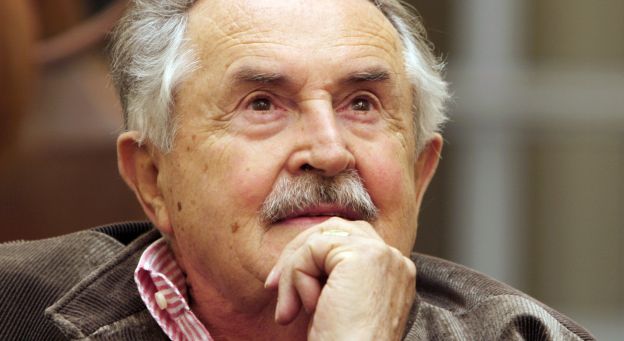
Postwar Consequences: Tonino Guerra’s Equilibrium
Jonathan Rosenbaum
Chances are, if you’ve seen many of the late films of Theodoros Angelopoulos, Michelangelo Antonioni (everything since L’avventura), Marco Bellocchio, Vittorio De Sica (Sunflower, A Place for Lovers, Marriage Italian Style), Federico Fellini (almost everything since Amarcord), Mario Monicelli, Elio Petri, Francesco Rosi, Andrei Tarkovsky (Nostalghia), the Taviani brothers, and/or Luchino Visconti, and paid much attention to their script credits, you know who Tonino Guerra (1920–2012) was and is—a ubiquitous presence in modernist European cinema, especially its Italian branches. Petri was his first cinematic employer, after Guerra started out as a schoolteacher and poet whose parents were illiterate; later on, he became a visual artist as well as a screenwriter with over a hundred credits.
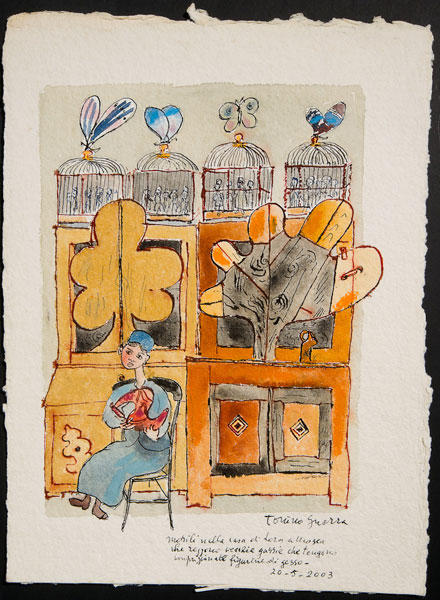
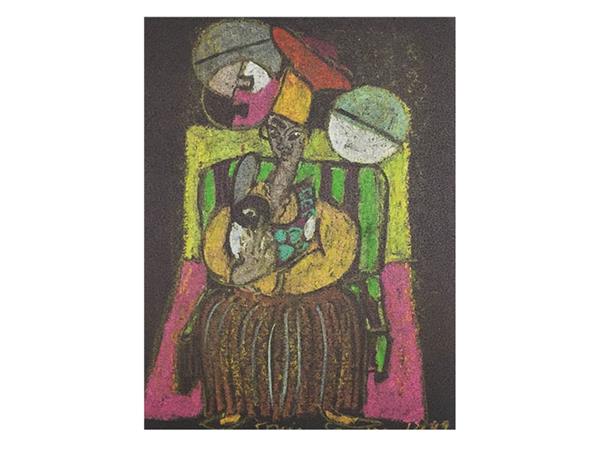
Even after one acknowledges the exceptionally collaborative role played by multiple writers on Italian films, it seems that no one else was considered quite as essential by so many important directors. In Nicola Tranquillino’s documentary about Tonino (visible on YouTube), Tonino himself suggests that what he brought to their films was a certain poetry. Yet what that poetry consisted of has been less than obvious to me. Even though he won an Oscar for his work on Amarcord, how can we tease out his contributions to a movie based on Fellini’s childhood memories?
Maybe if I knew Italian and could read his actual poetry I’d have a better idea. But now that an English translation of his 1967 novella Equilibrium is being reprinted by Moist, a small press in the U.K., and becoming available again for the first time in over half a century, it’s clear that he was a lot more than a helpful collaborator—and a close and treasured friend of Antonioni and Tarkovsky, both of whom attended his wedding to a Russian woman in Russia. Jazz pianist Marcus Roberts generally disappoints me on his own albums, but whenever he’s a sideman for Wynton Marsalis, he becomes an exciting, inventive improviser. By contrast, Guerra as a solo artist turns out to be every bit as talented, original, and challenging as the directors he worked with.
His story is a disturbing and gripping mind-boggler, at once hilarious and nightmarish. Inspired both by Guerra’s traumatic internment at a Nazi camp and by his reflexes as an artist in shaping material, his novel creates a kind of ongoing surrealist dialogue between these irreconcilable parts of his brain that gradually collapse and merge into one another.
Michael Bracewell, in his new introduction, cross-references Equilibrium with Fellini’s City of Women, Kathy Acker, Thomas Pynchon, and two Russian novels, Andrei Bely’s Petersburgand Benedict Erofeev’s Moscow Circles (also known as Moscow To the End of the Line). I would cite Tarkovsky’s Nostalghia, László Nemes’ Son of Saul, and Foreign Bodies (Richard Howard’s translation of Les corps étrangers, 1959, a novel by Jean Cayrol, the screenwriter of Alain Resnais’ Night and Fog and Muriel).
The strange compulsions of the exiled Russian hero of Nostalghia and the Hungarian member of the Sonderkommando in Son of Saul — respectively, to carry a lit candle across a mineral pool and to give a proper Jewish burial to a murdered boy — are irrational, allegorical missions, at once religious and therapeutic, to cope with unbearable and untenable situations, and the virtuosity required of both these heroes in fulfilling these tasks matches that of Guerra’s nameless hero-narrator in simply surviving, especially within the mounting uncertainties of his troubled consciousness. (Similarly, one could say that Guerra’s own virtuosity as a writer matches that of Tarkovsky and Nemes as filmmakers.) The narrator-hero of Cayrol’s novel is both a compulsive liar and a former Nazi collaborator, so the periodic deconstruction of the narrative that occurs whenever he exposes his own lies to the reader might be said to correspond to the moral and spiritual deterioration of many French citizens during the Occupation.
The narrator of Equilibrium, an Italian antifascist partisan during World War 2 and a graphic designer based in Milan two decades later, is neither a Nazi nor a collaborator, yet his harrowing and often absurdist war experiences make it impossible for him to be sure of anything — even to separate the world between “good guys” and “bad guys,” which many have childishly and opportunistically — as both war hero John McCain and draft-dodger Donald Trump have routinely making
Even worse, Guerra’s protagonist often can’t distinguish between good and bad decisions, between his professional impulses for designing ads (and for working his materials into pleasing shapes) and his personal compulsiveness in organizing his life and activities, or even between his past and his present. Meanwhile, he has more and more trouble making sense of the behavior of others, dehumanizing both them and himself in the process. As his confusion escalates, he finds that he can’t even
When he arrives at the camp, the teenage commander asks the prisoners for the return of a stolen watch, and when no one steps forward, he proceeds to fire three random bullets into the prisoners’ dark quarters every night until his watch is returned. It never is — although the narrator eventually discovers, many pointless deaths later, after the Americans have arrived and the commander has hanged himself, that he’s wearing a cheap watch that doesn’t even work.
I’m not sufficiently conversant with 1960s Italian fiction to know whether Guerra’s novella can be linked to other examples from this period. But one thing I find impressive about it is how much it has to say about postwar European society (including its standardized architecture and its mass-market ads) as well as its wartime confusions, and how much the former grew reactively out of the latter ‑- an implicit theme that is never spelled out directly because Guerra trusts readers to identify it on their own terms.
Equally impressive are the diverse ways that Guerra can represent his narrator’s divided consciousness stylistically, as in the poetic fragments that serve as his chapter titles, which point to Guerra’s literary origins as a poet.
Here are the third and fifth of these ten chapter headings:
“When you fall in love, for instance, you fall in love with yourself, but when you commit suicide you kill someone else”
“Whenever I tie up a parcel, for instance, I end up by finding myself tied up inside it”
Distinguishing one’s self from the world that one lives in, including other people, is the common theme in these and the eight other chapter titles, and the fact that all of them contain the phrase “for instance,” suggesting a series of other examples, points to the opposite theme of seeing one’s self as part of a collective entity that we call mankind, as well as seeing both one’s self and ourselves living in relation to various patterns and repetitions. As we live through a pandemic and election season that we vainly but persistently insist on calling historic, trying to discover what’s distinctive as well as indistinct about both ourselves and others, Equilibrium laughs at our nightmares and cordially invites us to think about them.


